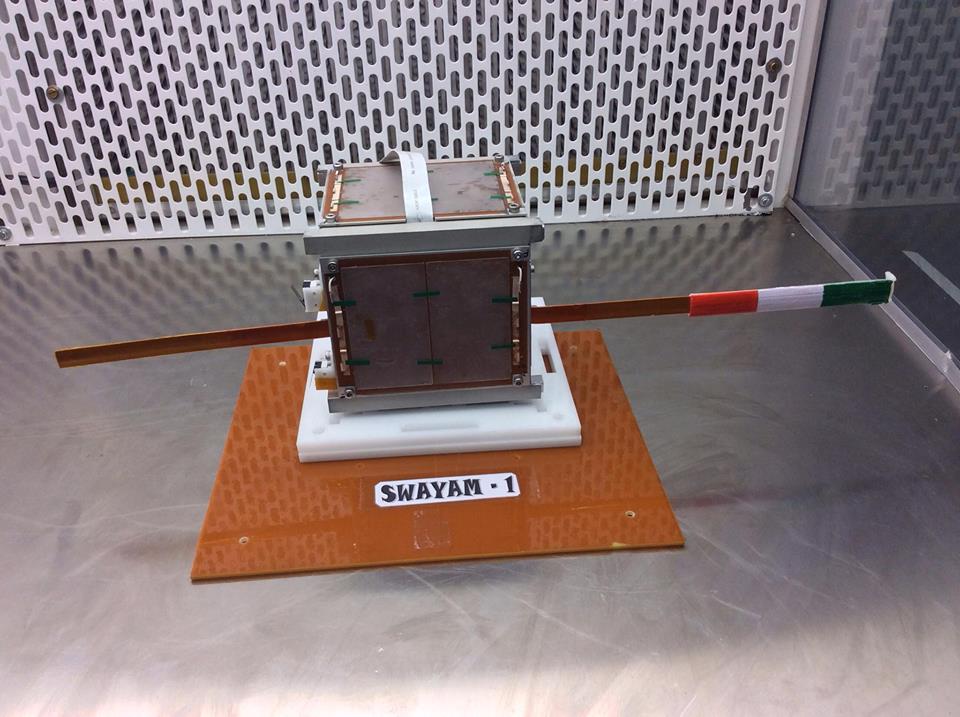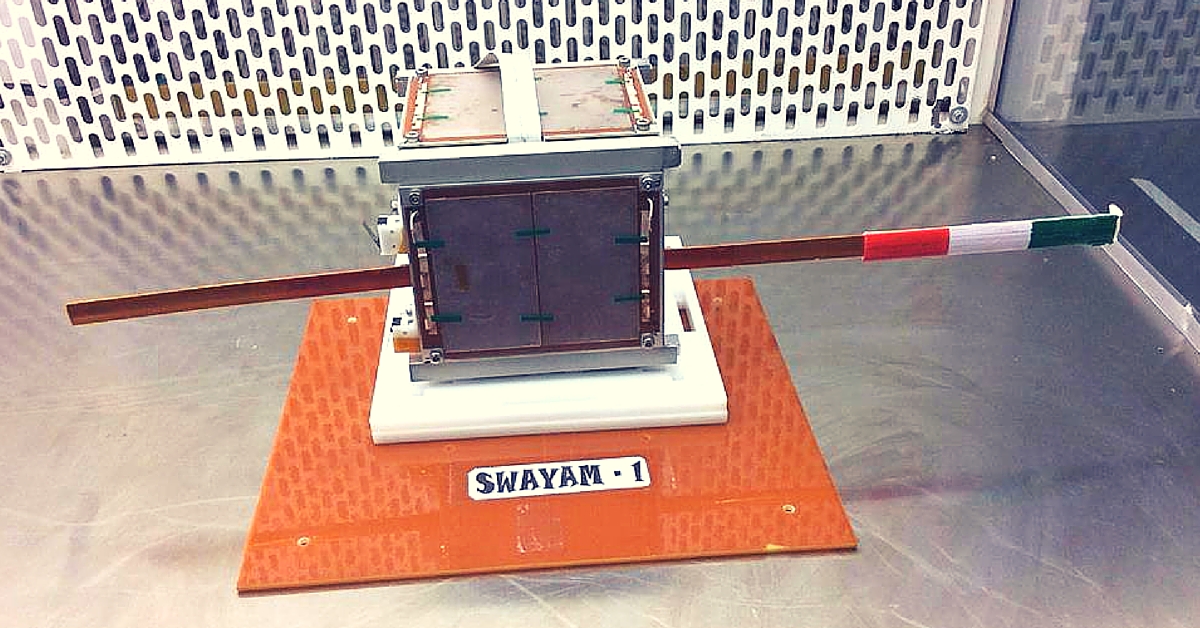A pico-satellite designed and built by students of College of Engineering in Pune is all set to be launched by ISRO very soon, along with Cartosat 2C on-board the Polar Satellite Launch Vehicle (PSLV) C34. Named Swayam, the satellite is a bi-directional communication platform, which will orbit the Earth at a height of 500-800 km.
The Swayam project was initiated by a group of students in late 2008, and it was officially approved by the institute in 2009. A Memorandum of Understanding (MoU) was signed between College of Engineering and ISRO on May 23, 2013, for the development and launch of Swayam. The flight model along with all environmental tests for the satellite was completed in February 2015.
The satellite has been handed over to ISRO and is scheduled to have a mission life of at least six months after the launch.

Source: Facebook
According to the college website, the Swayam project team of about 40 members has students of all years and from different branches. All the work has been done by the students with assistance from the faculty members.
The satellite weighs one kg and has dimensions of 10 cm X 10 cm X 11.35 cm. It has a payload capable of half duplex communication, which will enable the satellite to host point to point messaging services – so it can receive, store and transmit messages from one corner of the globe to the other. In a half-duplex communication system, there are two channels of communication but both the parties cannot communicate with each other simultaneously. The communication has to be in one direction at a time. A device like walkie-talkie is an example of half-duplex communication. Thus, the satellite will be useful in improving communication in rural areas.
“The entire satellite weighs about one kilo. It was a challenge for us to fit all the components inside a small cube-shaped box, but we are happy to have managed it finally,” Rucha Vaidya, a student associated with the project, had told Pune Mirror earlier.
A unique feature of the satellite is it Attitude Control System (ACS), which controls the dynamic behaviour of satellite, like orientation and motion.
Source: www.coep.org.in
With the help of a technique called Passive Magnetic Attitude Control (PMACS), the orientation of satellite is controlled and stabilised in the orbit without any power consumption and with reasonable accuracy for communication. The college claims that the ACS of Swayam is the first of its kind in India. The scientific mission of this project is to prove that PMACS is an efficient and cost effective solution for attitude control.
According to reports, a ground station has been set up within the college premises from where communication with the satellite will be established.
Like this story? Or have something to share? Write to us: contact@thebetterindia.com, or connect with us on Facebook and Twitter (@thebetterindia).
If you found our stories insightful, informative, or even just enjoyable, we invite you to consider making a voluntary payment to support the work we do at The Better India. Your contribution helps us continue producing quality content that educates, inspires, and drives positive change.
Choose one of the payment options below for your contribution-
By paying for the stories you value, you directly contribute to sustaining our efforts focused on making a difference in the world. Together, let's ensure that impactful stories continue to be told and shared, enriching lives and communities alike.
Thank you for your support. Here are some frequently asked questions you might find helpful to know why you are contributing?

